Hawaii's Magnificent Honu, The Endangered Hawaiian Green Sea Turtle
by Donnie MacGowan
Called Honu by Hawaii's natives, the endangered Hawaiian Green Sea turtle is beautiful, serene and seeming wise. Though they have swum the oceans for over 200 million years peacefully feeding on algae and invertebrates and living the turtle dream, this highly successful product of amphibian evolution is in grave danger. Loss of habitat, hunting and molestation by humans has conspired to push the Hawaiian Green Sea Turtle to the very verge of extinction. One of the great joys of visiting Hawaii is to see, and in many cases swim with, these gentle, fascinating, beautiful amphibians. But where?
Although the population is recovering, honu are still relatively scarce on most beaches in Hawaii--how is the casual visitor to know where to go, how to see them, how to treat them, how to swim with them?
Clearly, the visitor to Hawaii can use some help finding special places in general and beaches where the honu hang out in particular. To help you find the more secluded, wild and exotic destinations and very special attractions such as beaches where honu live in particular, and to help you get more out of your Hawaii vacation, Tour Guide Hawaii has released a brand new iPhone/iPod Touch App. This "must have" travel app is packed with hours of informative video on the most interesting places on Hawaii; helps navigate you to all the most popular visitor destinations, the most interesting attractions, the most romantic and secluded beaches; helps you effortlessly find hikes, snorkel spots, historical and cultural landmarks, shopping and dining. And of course, our new App includes directions to, and rating of, all the public restrooms! Learn all about the App, here.
More about Hawaii's Honu
Protected now by state and federal law, the population of once millions of individuals has been decimated to just a few hundred thousand; although they are making a comeback, Hawaii's honu are still very much endangered.
Honu may grow up to 45 inches and weigh as much as 400 pounds at maturity, reached at 25 years of age. Hawaiian Green sea turtles can easily be differentiated from the other near shore sea turtle in Hawaii, the much less common Hawksbill turtle, by counting the scales between the eyes. Hawksbills have four scales between the eyes and Hawaiian Green Sea turtles have two.
Lady honu crawl on shore to lay their eggs, generally after migration to the quieter shores of the French Frigate Shoals, 800 miles northwest of Hawaii, or the black sand beaches on the south end of the Big Island of Hawaii. Adult turtles feed primarily on limu--sea weed--near shore and jellyfish and other invertebrates when out at sea. Hawaiian Green Sea Turtles have been known to make swimming voyages of a few thousand miles in a single year.
Danger to the turtles comes from a myriad of directions; toxic waste, floating balloons and plastic bags, Styrofoam, plastic six-pack rings, abandoned fish nets and line, not to mention getting caught in active fishing operations. As if this weren't bad enough, new and debilitating diseases are afflicting the Hawaiian green sea turtle. Near public beaches, resorts and other areas heavily impacted by human activity as many as 90% of the turtles are dying slow, painful deaths from tumors, infections and other diseases as well as parasites which attack the diseased flesh.
Humans have caused this misery and the decline in these magnificent creatures lives...visitors who wish to see the turtles must take care not to further stress them. Do not approach basking turtles closely, never touch or pick them up. While swimming or on the beach, give the turtles at least 10 feet of space...approach no closer; never block the path of turtle crawling out onto the beach or a turtle surfacing in the water.
Honu were honored and revered by Hawaiians of old and today, harassing turtles carries a stiff fine. In any case, touching the turtle is a good way to get a raging salmonella infection. If honu are swimming near where you are, do not approach or chase them; always swim to the side of them, never above (as a predatory shark would) nor below them (so they won't feel that their soft belly is at risk).
Anyone who observes their beauty and grace underwater easily understands how the Hawai'ians base their word for "peace", "honua" on their name for the green sea turtle, "honu".
It is within our grasp, this generation, to save or destroy forever these ancient animals; treat them gently and with respect. A video about Hawaii's honu can be found here.
Don't forget to check out our exciting new iPhone/iPod Touch App at iTunes, here. More information is available by visiting www.tourguidehawaii.com or www.lovingthebigisland.wordpress.com. For information about the author, please go here.
All media copyright 2009 by Donald B. MacGowan
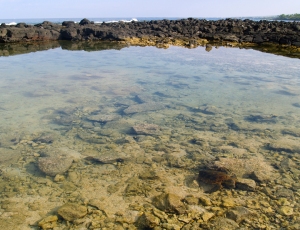

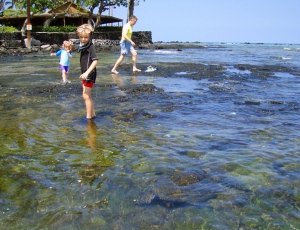
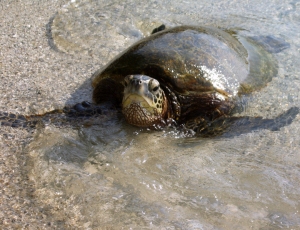
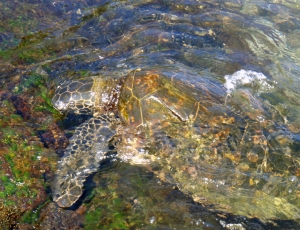
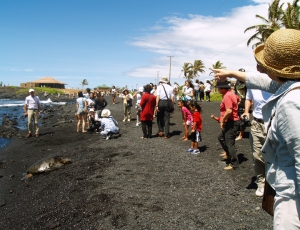

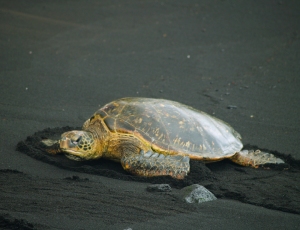
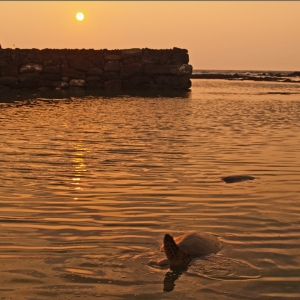

No comments:
Post a Comment